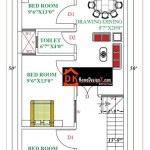House plans are detailed drawings and specifications that provide a blueprint for the construction of a house. They include information about the layout of the house, the dimensions of the rooms, the types of materials to be used, and the electrical and plumbing systems. House plans are essential for obtaining a building permit and for ensuring that the house is built safely and to code.
There are a number of ways to find house plans. One option is to hire an architect to design a custom plan. This is the most expensive option, but it allows you to create a plan that is tailored to your specific needs and preferences. Another option is to purchase stock plans from a home plan provider. Stock plans are pre-designed plans that are available for purchase and can be customized to fit your needs. Finally, you can also find free house plans online. However, it is important to note that free plans may not be as comprehensive or well-detailed as paid plans.
The best way to find house plans is to consider your budget, needs, and preferences. If you have a specific design in mind, hiring an architect may be the best option. If you are on a budget, purchasing stock plans or finding free plans online may be a better choice. Ultimately, the decision of how to find house plans is a personal one.
Here are 9 important points to consider when finding house plans:
- Determine your budget
- Consider your needs
- Research your options
- Hire an architect (optional)
- Purchase stock plans
- Find free plans online
- Review plans carefully
- Make necessary modifications
- Obtain a building permit
By following these tips, you can find the perfect house plans for your needs and budget.
Determine your budget
The first step in finding house plans is to determine your budget. This will help you narrow down your options and choose plans that are affordable for you. There are a number of factors to consider when budgeting for house plans, including the size and complexity of the house, the materials you want to use, and the cost of labor in your area.
- Size of the house: The larger the house, the more expensive the plans will be. This is because larger houses require more materials and labor to build.
- Complexity of the house: The more complex the house, the more expensive the plans will be. This is because complex houses require more detailed drawings and specifications.
- Materials: The type of materials you choose for your house will also affect the cost of the plans. For example, plans for a house built with brick or stone will be more expensive than plans for a house built with wood.
- Cost of labor: The cost of labor in your area will also affect the cost of the plans. In areas where labor costs are high, the plans will be more expensive.
Once you have considered all of these factors, you can start to develop a budget for your house plans. It is important to be realistic about your budget and to choose plans that you can afford. Keep in mind that the cost of the plans is just one part of the overall cost of building a house. You will also need to factor in the cost of materials, labor, and permits.
Consider your needs
Once you have determined your budget, you need to consider your needs when choosing house plans. There are a number of factors to consider, including the size of the house, the number of bedrooms and bathrooms, the layout of the house, and the style of the house.
- Size of the house: The size of the house is one of the most important factors to consider. You need to choose a house that is large enough to accommodate your needs, but not so large that it is too expensive to build or maintain.
- Number of bedrooms and bathrooms: The number of bedrooms and bathrooms you need will depend on your family size and lifestyle. If you have a large family, you will need a house with more bedrooms and bathrooms. If you entertain guests frequently, you may want a house with a guest room and bathroom.
- Layout of the house: The layout of the house is also important to consider. You need to choose a layout that works well for your lifestyle. For example, if you like to cook, you may want a house with a large kitchen. If you have a lot of guests, you may want a house with a large living room.
- Style of the house: The style of the house is a matter of personal preference. There are many different styles of houses to choose from, so you can find one that matches your taste.
Once you have considered all of these factors, you can start to narrow down your choices and choose house plans that meet your needs.
Research your options
Once you have determined your budget and considered your needs, you need to research your options for finding house plans. There are a number of different places to find house plans, including:
- Online: There are a number of websites that offer house plans for sale. These websites typically have a wide variety of plans to choose from, and you can search for plans by size, style, and other criteria.
- Home plan books: Home plan books are available at most bookstores and home improvement stores. These books typically contain a collection of plans from different architects and designers.
- Magazines: Home and architecture magazines often feature house plans in their articles. You can find these magazines at most newsstands and bookstores.
- Home builders: Home builders often have a portfolio of house plans that they can build. You can contact a home builder in your area to see if they have any plans that meet your needs.
- Architects: Architects can design custom house plans for you. This is the most expensive option, but it allows you to create a plan that is tailored to your specific needs and preferences.
Once you have found a few house plans that you like, you need to compare them carefully before making a decision. Consider the size, layout, style, and cost of each plan. You should also make sure that the plan meets your specific needs and preferences.
If you are not sure which house plan is right for you, you may want to consult with an architect or home builder. They can help you choose a plan that meets your needs and budget.
Once you have chosen a house plan, you can start the process of building your dream home.
Hire an architect (optional)
Hiring an architect to design custom house plans is the most expensive option, but it allows you to create a plan that is tailored to your specific needs and preferences. Architects are trained professionals who can help you design a house that is both beautiful and functional. They can also help you navigate the building permit process and ensure that your house is built to code.
There are a number of benefits to hiring an architect. First, architects can help you create a house that is unique and reflects your personal style. Second, architects can help you design a house that is efficient and functional. Third, architects can help you save money by avoiding costly mistakes during the construction process.
If you are considering hiring an architect, it is important to do your research and find an architect who is experienced and reputable. You should also interview several architects before making a decision. Be sure to ask each architect about their experience, their design philosophy, and their fees.
Once you have hired an architect, you will work closely with them to develop a design for your house. The architect will take your needs and preferences into account and create a plan that meets your budget. The architect will also help you obtain the necessary building permits and oversee the construction process.
Hiring an architect is a great way to ensure that your dream home is built to your exact specifications. However, it is important to remember that hiring an architect is an investment. Be sure to factor the cost of the architect’s fees into your budget.
Purchase stock plans
Stock plans are pre-designed house plans that are available for purchase. They are a good option for people who want to save money on the cost of custom plans. Stock plans are typically less expensive than custom plans, and they can be purchased online or from home plan providers.
There are a number of benefits to purchasing stock plans. First, stock plans are less expensive than custom plans. Second, stock plans are available in a wide variety of styles and sizes. Third, stock plans can be purchased online or from home plan providers, which makes them easy to find.
However, there are also some drawbacks to purchasing stock plans. First, stock plans are not as unique as custom plans. Second, stock plans may not be able to be modified to fit your specific needs. Third, stock plans may not be available in all areas.
If you are considering purchasing stock plans, it is important to do your research and find a plan that meets your needs. You should also consider the cost of the plan, the style of the plan, and the availability of the plan in your area.
Once you have purchased a stock plan, you can start the process of building your dream home. Stock plans typically come with detailed instructions, so you can build your home yourself or hire a contractor to do it for you.
Find free plans online
There are a number of websites that offer free house plans. These plans are typically donated by architects and designers who want to share their work with the public. Free plans are a great option for people who are on a budget or who want to build their own home.
- Variety of plans: There are a wide variety of free house plans available online. You can find plans for all types of houses, including small homes, large homes, and everything in between. You can also find plans for houses of all different styles, including traditional, modern, and contemporary.
- Detailed instructions: Most free house plans come with detailed instructions that explain how to build the house. These instructions are typically written by the architect or designer who created the plan. The instructions will include information on the materials needed, the construction methods, and the estimated cost of construction.
- Easy to access: Free house plans are easy to access online. You can simply search for “free house plans” and you will find a number of websites that offer them. You can then browse the plans and download the ones that you like.
- Can be modified: Free house plans can be modified to fit your specific needs. For example, you can change the size of the house, the number of bedrooms and bathrooms, or the layout of the house. You can also change the materials used to build the house.
However, there are also some drawbacks to using free house plans. First, free plans may not be as comprehensive as paid plans. Second, free plans may not be available for all types of houses. Third, free plans may not be up to code in your area.
If you are considering using free house plans, it is important to do your research and find a plan that meets your needs. You should also consider the cost of modifying the plan to fit your specific needs and the cost of obtaining a building permit.
Review plans carefully
Once you have found a few house plans that you like, it is important to review them carefully before making a decision. There are a number of things to consider when reviewing house plans, including the size, layout, style, and cost of the house. You should also make sure that the plan meets your specific needs and preferences.
- Size of the house: The size of the house is one of the most important factors to consider. You need to choose a house that is large enough to accommodate your needs, but not so large that it is too expensive to build or maintain.
- Layout of the house: The layout of the house is also important to consider. You need to choose a layout that works well for your lifestyle. For example, if you like to cook, you may want a house with a large kitchen. If you have a lot of guests, you may want a house with a large living room.
- Style of the house: The style of the house is a matter of personal preference. There are many different styles of houses to choose from, so you can find one that matches your taste.
- Cost of the house: The cost of the house is also an important factor to consider. You need to make sure that you can afford to build and maintain the house before you start construction.
Once you have considered all of these factors, you can start to narrow down your choices and choose a house plan that meets your needs. It is also important to remember that you can always make changes to the plan to fit your specific needs and preferences.
Make necessary modifications
Once you have found a house plan that you like, you may need to make some modifications to fit your specific needs and preferences. This is especially true if you are using a stock plan. Stock plans are designed to be general enough to appeal to a wide range of buyers, so they may not be perfect for everyone. Common modifications include changing the size of the house, the number of bedrooms and bathrooms, or the layout of the house. You may also want to change the materials used to build the house.
When making modifications to a house plan, it is important to work with a qualified architect or engineer. This will ensure that the modifications are made safely and correctly. You should also obtain a building permit before starting construction. A building permit ensures that your house is built to code and that it is safe for occupancy.
Making modifications to a house plan can be a great way to create a home that is perfect for you and your family. However, it is important to remember that modifications can also add to the cost of building your home. Be sure to factor the cost of modifications into your budget before starting construction.
Here are some tips for making modifications to a house plan:
- Start by making a list of your needs and wants. What are the most important things that you want in your home? What are some things that you would like to have, but could live without? Once you have a list, you can start to prioritize your needs and wants.
- Work with a qualified architect or engineer. An architect or engineer can help you to make sure that your modifications are made safely and correctly. They can also help you to develop a plan that meets your needs and budget.
- Obtain a building permit before starting construction. A building permit ensures that your house is built to code and that it is safe for occupancy.
- Be prepared to pay more for modifications. Modifications can add to the cost of building your home. Be sure to factor the cost of modifications into your budget before starting construction.
By following these tips, you can make modifications to a house plan that will create a home that is perfect for you and your family.
Obtain a building permit
A building permit is a document issued by a local government that authorizes the construction of a new building or the alteration of an existing building. Building permits are required to ensure that buildings are constructed safely and in accordance with local building codes. Codes are a set of regulations that establish minimum standards for the design, construction, and maintenance of buildings. They are in place to protect the health, safety, and welfare of the public.
To obtain a building permit, you will need to submit a set of plans to your local building department. The plans must show the design of the building, including the foundation, framing, electrical system, plumbing system, and HVAC system. The building department will review the plans to ensure that they meet all applicable building codes. If the plans are approved, you will be issued a building permit.
The building permit process can take several weeks or even months, so it is important to start the process early. You should also factor the cost of the building permit into your budget. Building permit fees vary depending on the size and complexity of the project.
Once you have obtained a building permit, you can begin construction. It is important to follow the plans carefully and to adhere to all applicable building codes. If you make any changes to the plans, you must submit revised plans to the building department for approval.
Failure to obtain a building permit can result in fines or even the demolition of your building. It is important to remember that a building permit is not a guarantee that your building will be safe or habitable. It is simply a way to ensure that your building meets the minimum standards set forth in the building codes.

.jpg)







Related Posts








